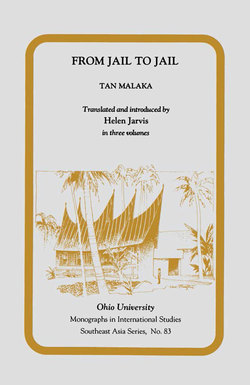Читать книгу From Jail to Jail - Tan Malaka - Страница 27
На сайте Литреса книга снята с продажи.
ОглавлениеChapter 13
ARREST AND DEPORTATION
[149] Seen in close-up, the painting of even a skilled artist may seem unclear and unintelligible. All we see are intersecting lines and dabs of color. Only when we stand at some distance do the content, pattern, and aim of the painting become evident.
History, enacted by human beings, has much in common with the work of an artist. When we are involved in it, being buffeted by the varied objectives of the different classes, parties, and leaders, it is hard to see the broad outlines that will ultimately define the struggle. Only when we have advanced a little and are far enough removed can we really understand the historical period we have lived through.
I shall present some notes here which compare the atmosphere of the 1926-1927 period with that of 1946-1947. It is my hope that they will provide some pointers for those who wish to examine certain events closely from all angles. Although twenty years of peace do not usually bring many changes, the two decades during which Indonesian society experienced the Second World War and the revolution manifested major transformations.
[150] While in 1926-1927 we were at a high point of the economic cycle, in 1946-1947 we are caught in the coils of the Dutch blockade and in the midst of the greatest world economic crisis ever seen.1 While all the factories, workshops, plantations, transport facilities, and machines were intact and sound in 1926-1927, today most of the sugar factories are useless if not in ruins, our plantations have reverted to grassland or been destroyed, and nearly all our machines have been demolished, worn out, or carted off to Japan. While in 1926-1927 we had a surfeit of labor of all types—skilled, unskilled, and technical—during the Japanese occupation of 1942-1945 this labor force was almost completely wiped out.2 It is probable that some four to five million workers and peasants were killed during the Japanese occupation.3
In any period of conflict, where there is good for a given group or class from one aspect, there is bad from another and vice versa, as we shall see below. When the economy was at its peak (1926-1927) it was relatively easy to make a living, workers could get employment easily, and some of the younger generation had the opportunity to learn to speak Dutch and to get rather soft jobs as clerks. Furthermore, there were all kinds of light diversions like cinemas, soccer, and hula-dancing.
In the time of our “older brothers” from the Greater East Asia Co-Prosperity Sphere, the people had their rice and their stock taken from them; workers and peasants were kidnapped and forced to work in the heat and the rain building roads, airfields, and forts for the Japanese; they were given two hundred grams of corn or rice a day, sheds to sleep in, and gunny sacks to wear (if they were available); and they were beaten, left out in the sun, or held under water if accused of being lazy. The youth were taught “Nippon go,”4 to bow towards Tokyo, and to join the Keibodan, Seinendan, Suisintai, Heiho, and Peta.5 The young women were trained to be “hostesses.” The whole of the Indonesian people were thought of as genjumin bakaro.6
